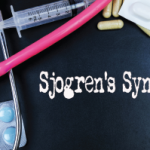Salivary gland biopsy may also help identify patients at higher lymphoma risk. “These patients also have a number of upregulated genes in their salivary glands,” she said. Repeated biopsies for longitudinal assessment are not practical. “We need other methods of repeated lymphoma risk evaluation,” she said.
Measure disease activity scores with serology and ultrasound of the salivary glands, and add biopsy if needed, she said. Men may be at higher risk for lymphomas in Sjögren’s syndrome, she added. Look for family history of malignancy, as well.
Rituximab and abatacept may reduce glandular swelling and reduce germinal center formation in Sjögren’s syndrome, so these agents may one day help prevent lymphoma in these patients, Dr. Theander said.
In high-risk patients, rheumatologists should do regular follow-ups to assess for lymphoma and consider early disease-modifying treatment in patients with symptomatic, systemic disease activity, she said.
“I have no answer, but my feeling is that soon it will be time to take Sjögren’s syndrome more seriously and to start treatment earlier,” she said.
Susan Bernstein is a freelance medical journalist based in Atlanta.
Second Chance
If you missed this session, Clinical Challenges of Sjögren’s Syndrome: Neurological Complications and Lymphoma Risk, it’s not too late. Catch it on SessionSelect.

